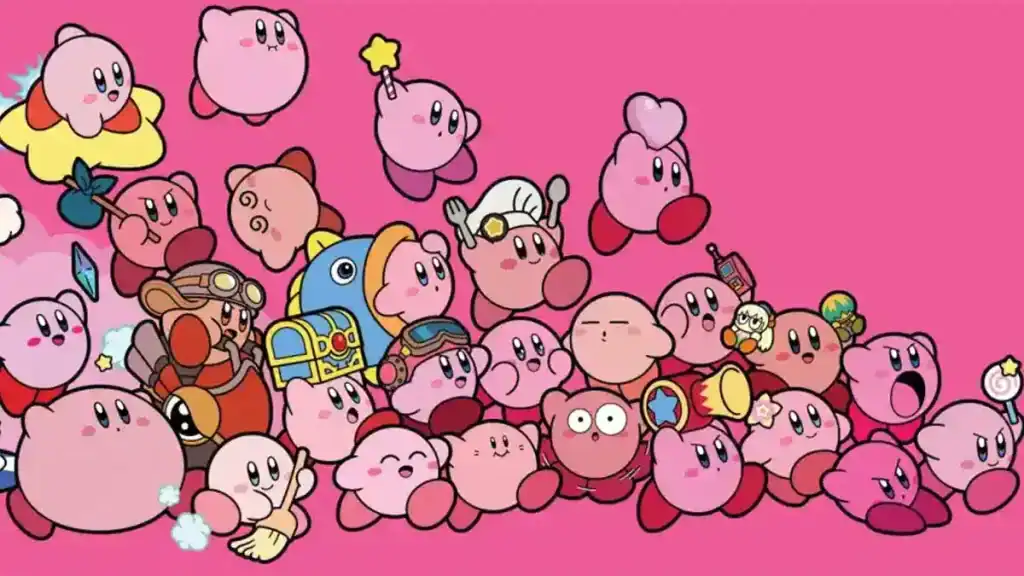Reveal the complete history of Kirby, Nintendo’s lovable pink puffball turned powerhouse. From his humble start on the original Game Boy in 1992 to modern 3D games like Kirby and the Forgotten Land, this comprehensive work reveals how he rose to gaming icon status, one inhale at a time.
Who is Kirby?
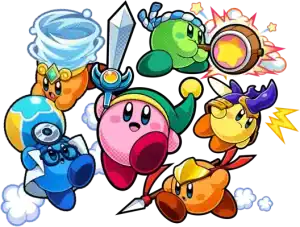
He’s one of Nintendo’s most iconic characters. A pink, round, and unexpectedly tough protagonist who can inhale enemies, imitate their abilities, and hover around in mid-air. Developed by HAL Laboratory and released by Nintendo, he has been the face of scores of games since his entry in 1992. Over time, he’s evolved from a humble Game Boy sprite to an icon of innovative game design and family-friendly entertainment.
Regardless if you’re a seasoned old-timer or a new fan who wants to see his history, this inside retrospective look at his history will bring you up to speed about how a happy puffball went from being a nobody to a gaming phenomenon.
Humble Beginnings (1992)
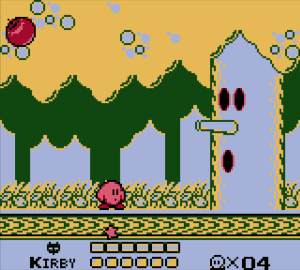
He made his debut in Kirby’s Dream Land for the Game Boy in 1992. Developed by 19-year-old Masahiro Sakurai, he was originally designed as a filler character while his game was still being produced. His round, easy-to-animate form was straightforward enough, but Sakurai and HAL Laboratory employees grew to like him, and so did players.
Curiously enough, he did not even possess his defining ability to borrow enemy powers in his first game. That ability was introduced later in Kirby’s Adventure on the NES in 1993, also the first time he was fully in color, and the first time he technically was pink (he had been gray on the monochrome Game Boy before then.)
The Birth of the Copy Ability
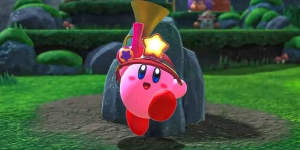
Kirby’s Adventure was a giant step. With the innovation of the copy ability, everything was transformed. It enabled him to transform into new shapes and powers by sucking up enemies and replicating their attributes. It was the central mechanism that would shape the series for the next couple of decades.
This capability to literally copy an enemy’s ability added layers of strategic depth and diversity into gameplay, and gamers could experiment with introducing all sorts of powers and playstyles. It also enabled some of Nintendo’s most creative boss battles and level designs.
The Expansion of the Franchise’s Universe (1995–2005)
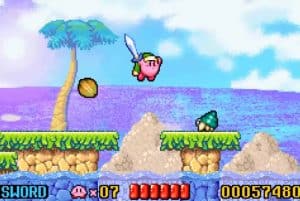
In the ’90s and early 2000s, he appeared on a variety of consoles like the SNES, Nintendo 64, and Game Boy Advance. Games like Kirby Super Star (1996), Kirby 64: The Crystal Shards (2000), and Nightmare in Dream Land (2002) added more powers, characters, and even gameplay modes to the franchise’s universe.
This era also came with a great many favorite enemies and friends in tow, such as Meta Knight and King Dedede which are both subsequent fan favorites (and playable characters in the Super Smash Bros. franchise).
Experimental Gameplay
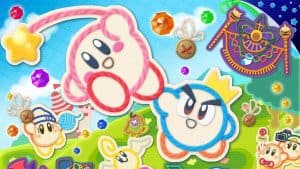
One of the coolest things about this franchise is how often they experiment with new gameplay concepts and art styles. For example:
- Kirby’s Epic Yarn (2010) is a reinterpretation of Kirby as a soft, fabric world with all-new abilities.
- Kirby: Canvas Curse (2005) utilized the Nintendo DS stylus for its innovative touchscreen controls.
- Kirby and the Rainbow Curse (2015) introduced equal gameplay to the Wii U in the form of claymation graphics.
These games didn’t always remain faithful to the original formula but kept the series new and fresh.
Modern Day: The Forgotten Land and Beyond
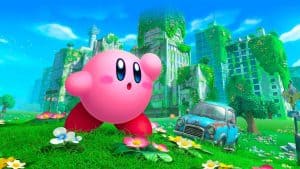
In 2022, Forgotten Land was the very first fully 3D mainline game, which was both critical and a fan favorite. It took what were familiar mechanisms, such as the copy feature, and then combined them with open levels and fresh mechanisms like “Mouthful Mode,” in which he can swallow large items like vending machines and cars.
This game demonstrated that after 30 years, he was able to evolve and still be as unique as when he was first released. And to put the icing on the cake, it’ll be upgraded and ported onto the new Nintendo Switch 2. Not only that, but a new game, Kirby Air Riders, is also coming out for the Switch 2.
Why He Remains Popular
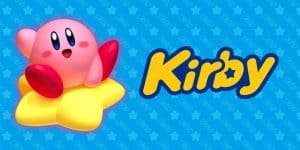
His games have always struck a unique balance: they’re simple for beginners but loaded with secrets and challenges for old hands. The series is renowned for its simple yet elegant design, charming tunes, colorful graphics, and plot surprises.
But most of all, perhaps, he is simply… fun. He’s the sort of character who can brighten someone’s day with a smile (provided he doesn’t inhale them), and his world is one of limitless imagination.
Final Thoughts: Kirby’s Legacy in Gaming
From humble origins as a test sprite on the Game Boy to gaming icon status, he has become a unique part of Nintendo’s pantheon of characters. His evolution charts the course of gaming itself—simple in its early years but growing more complex and innovative with each successive generation.
If you’re behind on this lovable franchise, there’s never a better moment to catch up with it. And if you’re an old-school fan, you already know: Kirby is not just a puffball; he’s a force to be truly reckoned with.

